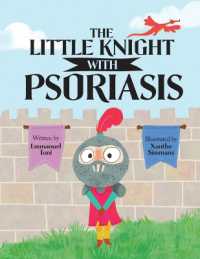- ホーム
- > 洋書
- > 英文書
- > Science / Mathematics
基本説明
Taylor seeks to bring together the fruits of work in psychology, sociology, and her own field of neuroscience to shed light on the nature of cruelty and what makes human beings cruel. As with her highly regarded previous book, Brainwashing, Taylor draws in examples from history and literature in her study, making this a rich and multifaceted analysis that should be of interest to a wide readership, and provoke much thought, debate, and further research.
Full Description
In this thoughtful exploration of a painful subject, Kathleen Taylor seeks to bring together the fruits of work in psychology, sociology, and her own field of neuroscience to shed light on the nature of cruelty and what makes human beings cruel. The question of cruelty is inevitably tied to questions of moral philosophy, the nature of evil, free will and responsibility. Taylor's approach is ambitious, but little work has been done in this area and this wide-ranging discussion, considering the roles of emotion, belief, identity and 'otherizing'; evolved instincts and differences in brains; callousness and sadism; seeks to begin to identify how we might reduce or limit cruelty in our societies by a greater understanding of its causes, and the circumstances in which it can grow.
As with her highly regarded previous book, Brainwashing, Taylor draws in examples from history and literature in her study, making this a rich and multifaceted analysis that should be of interest to a wide readership, and provoke much thought, debate, and further research.
Contents
Preface and Acknowledgements ; Introduction - Cruelty in Context ; 1. What is cruelty? ; 2. Quis judicat? Who decides? ; 3. Why does cruelty exist? ; 4. How do we come to act? ; 5. How do we come to feel? ; 6. How do we come to believe? ; 7. Why are we callous? ; 8. Why does sadism exist? ; 9. Can we stop being cruel? ; Bibliography







